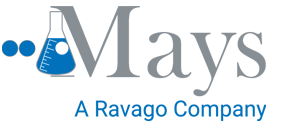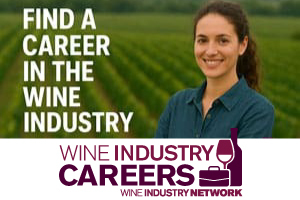899 Adams St. Suite G-2, St. Helena, CA, United States of America, 94574
Feeds

The History of Yeast (part 1)
 In the introductory blog in the Wine Series, we took a look at why it is important to rehydrate yeast properly. In the future, we will talk about and compare and contrast specific strains of yeast. But before we get into what the differences are between specific yeasts, we should take a look at how the yeasts used in winemaking came to be what they are today.
In the introductory blog in the Wine Series, we took a look at why it is important to rehydrate yeast properly. In the future, we will talk about and compare and contrast specific strains of yeast. But before we get into what the differences are between specific yeasts, we should take a look at how the yeasts used in winemaking came to be what they are today.
Yeast is not new. It didn’t get invented. The fungus occurs naturally and has always been here with us and has changed along with us humans.
Sometime, possibly around 5,000 years ago, humans realized yeast could be a tool and domesticated for our own purposes – whether that’s making bread or alcohol. In breadmaking, the yeast gives the bread CO2 bubbles to make the dough rise. Back then, people didn’t know about potassium bitartrate or other chemical means of making dough rise, so all bread was naturally fermented by using yeast and/or sourdough bacteria.
In nature, yeast divides and makes a clone of itself – an exact copy of itself or at least it tries to. Same as with humans, when yeast makes copies of their DNA there are mistakes or mutations that happen in the process. Through time and the accumulation of these mutations, yeast has evolved. As a result, a naturally occurring yeast that exists in a certain geographic area will be different from a naturally occurring yeast in a different geographic area.
Now let’s talk about how humans, specifically winemakers for the last few centuries or millennia, influenced this process in a basic way. What happens is winemakers end up with a feedback loop where a winery took the grapes, crushed them, and lets them ferment. Then when the fermentation was done, the yeast shut down and put itself into suspended fermentation waiting for the next opportunity to live. As part of the winemaking clarification process, the winemaker lets the wine settle. The live yeast, dead yeast, and other particles settle to the bottom due to gravity and the clear wine remains at the top. The winemaker then drains the clear desirable wine off of the “lees” or all of the heavy particles. What does the winemaker do with the lees? They would get thrown back into the vineyard as nutrients for the soil.
The yeast is now back in the vineyard, and the wind blows, and the yeast dries and lays dormant in the soil and on the grapevines. This puts the “natural” yeast used to ferment the wine from one year back into the vineyard to get back on the next years grapes and then ultimately to ferment next year’s wine and on and on it goes. It becomes a feedback loop that selects the yeast that does a good job of fermenting the grapes into wine.
So, geographically, certain regions became famous for their wines for two reasons:
- The grapes grew really well and the winemakers had an easy time making good-tasting wine out of the grapes in the area because the climate was perfect for that grape variety.
- Through the feedback process, they managed to naturally select strains of yeast to make good-tasting wines.
Historical examples of these regional yeast, appellation and terroir combinations come from the “old world” regions like Bordeaux, in France. Whether it was a Red wine blend or white Sauternes wines from Bordeaux, these wines historically are highly regarded and can demand many hundreds to many thousands of dollars per bottle. They evolved their own historical yeast strains through yeast reuse. The same goes for Burgundy and Beaujolais. Germany and Italy also have appellations with historic yeast strains that evolved and were used there. Many of the places that have wine styles named after them have equivalent yeast strains that evolved from the region.
While this process was occurring, science was evolving.
Turn back the clocks to around 1590, when the microscope was invented, then forward to 1680, when yeast was first identified. From there we move to 1857 when it was discovered that yeast was the cause of alcoholic fermentation.
The combination of the scientific method, the invention of the microscope, and the realization that yeasts can be cultured, grown, and selected made it possible to give wine or beer a whole new yeast industry.
From this, a whole yeast industry was born for the making of wine, beer, cider, and bread.
To learn more, or to discover the breadth of RCNA’s yeast catalog, please click here.
About
For nearly 30 years, Silicon Valley Bank has been dedicated to providing global financial services to some of the most innovative and entrepreneurial companies in the technology, life science, venture capital and premium wine industries. Our experience with these industries affords us a deep understanding of our clients' business models and a high level of comfort with the business cycles inherent to these dynamic markets.
Silicon Valley Bank offers a full range of sophisticated banking and investment services, but what sets us apart from other banks is our innovative approach and deep commitment to helping entrepreneurial companies of all sizes, and at all stages, grow their businesses around the world.
Over the years, we've built an unparalleled network of relationships with companies, service providers and venture capital. Silicon Valley Bank helps clients gain access to the right people and the right resources to achieve their goals.
Wine Division
When formed in 1994 to serve premium wineries and vineyards, Silicon Valley Bank's first wine industry office stood as the only banking office in the United States dedicated exclusively to the premium wine industry. Today Silicon Valley Bank's Wine Division is the leading provider of financial services to wineries and vineyards in the western United States, with over 300 winery and vineyard clients, and growing, in Napa, Sonoma, the Central Coast of California, Oregon and Washington.
Silicon Valley Bank's premium wine specialists are a unique group they are experts in the wine industry and understand that the winemaking business is like few others. They have a thorough appreciation for the rewards that come from winemaking, but also understand the risks and challenges faced by vintners. You'll find that our team of 35 professionals is enthusiastic about helping you turn challenges into opportunities.
Contact
Contact List
| Title | Name | Phone | Extension | |
|---|---|---|---|---|
| Division Relationship Mgr - Founder, Wine Division | Rob McMillan | rmcmillan@svb.com | 707-967-1367 | |
| Wine Division Manager | Bill Stevens | wstevens@svb.com | 707-967-1373 |
Location List
| Locations | Address | State | Country | Zip Code |
|---|---|---|---|---|
| Silicon Valley Bank | 899 Adams St. Suite G-2, St. Helena | CA | United States of America | 94574 |



